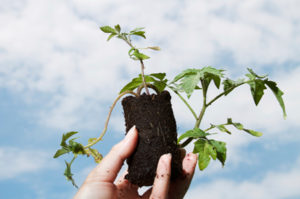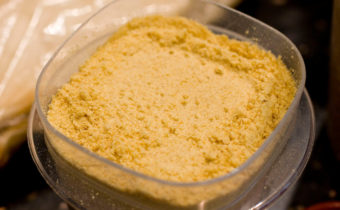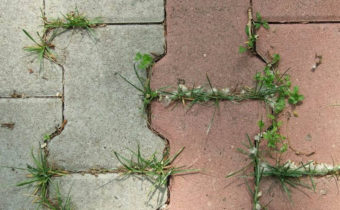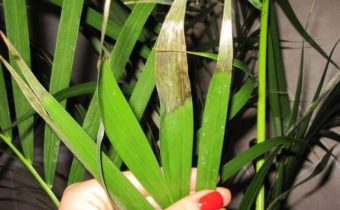Room tomatoes: winter harvest
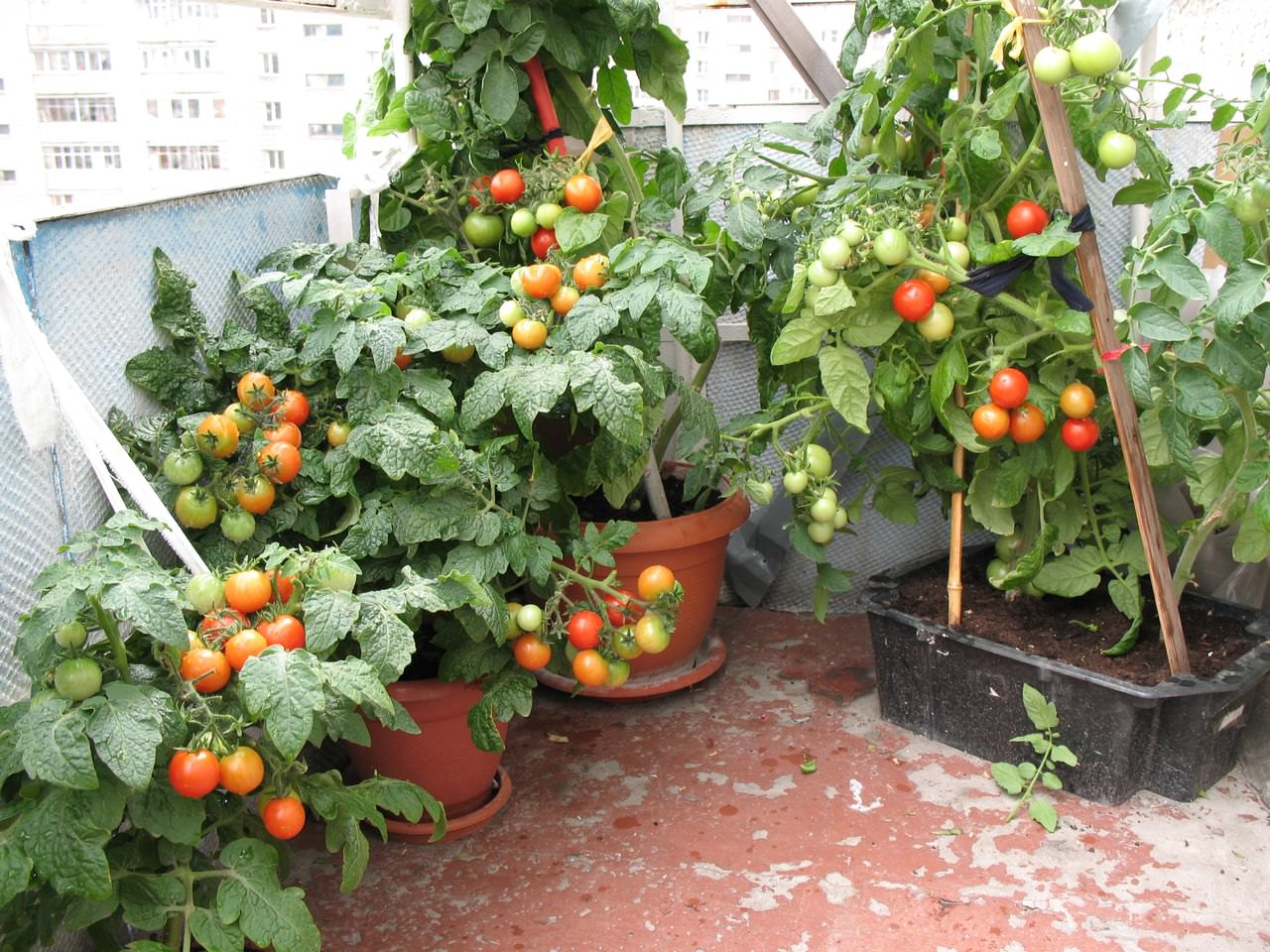
Tomatoes can be grown not only in spring and summer, but also in winter. Plant tomatoes on the window, then you are guaranteed a big harvest all year round regardless of the climate in the region. Growing tomatoes in the winter at home is slightly different from the greenhouse, there are nuances.
What are the best varieties to plant on the windowsill and how to take care of them, prompted by the advice of experienced farmers.
Choosing the time of sowing
There is no specific time limit for growing seedlings at home, as you can plant seeds at any convenient time. It only depends on when you want to harvest. If you plan to pick homemade tomatoes in the middle of winter, then the grains should be planted in the fall. When sowing seeds in spring, the harvest can be collected at the beginning of summer. Plant seeds at home at any time convenient for you, the main thing is to observe the correct planting and care of plants.
Preparing seeds
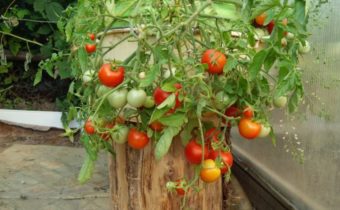 Be sure to process the grain before planting. Processing allows you to improve the quality of planting material, increase the percentage of seed germination. You can handle in 2 stages:
Be sure to process the grain before planting. Processing allows you to improve the quality of planting material, increase the percentage of seed germination. You can handle in 2 stages:
- soak the seeds in lightly salted water for 10-15 minutes. Those that float boldly throw them away - they are empty;
- put for 20-25 minutes in a weak solution of potassium permanganate for disinfection. Potassium permanganate minimizes the risk of viruses and infections, so seedlings will definitely be healthy.
Sometimes gardeners use various growth promoters for seed treatment. They reduce the germination period, so the seedlings appear faster than usual.
Seeds need to be prepared on the day of planting.
Choose capacity
Initially plant all seeds in a large shallow container. Then, when the seedlings grow, it should be dived into individual cups with a nominal volume of 400-500 ml. You can initially sow the grain in separate plastic cups, but take a small volume: 100-200 ml will be quite enough. The material for the container should be thin, plastic is most suitable. Be sure to make holes at the bottom of the container so that water can drain. Before you fill the container with earth, put a drainage on its bottom. Drainage removes excess moisture from the plants, does not allow the soil to sour.
We choose the soil
To grow tomatoes at home on the windowsill in the winter you need to pick a nutritious soil. It is better to take the land with a neutral pH, loose and nutritious. Purchase land in the store, you can bring from the dacha. The richer the composition of the soil mixture will be, so will your future seedlings be more magnificent. Prepare a nutritious soil if you are going to grow tomatoes at home in the winter, so mix:
- 1 part of river sand;
- 2 pieces of ordinary land;
- 1 part peat.
Instead of peat, you can add humus or sod land. If you take the land from the dacha, process it: calcine it in the oven for several hours or leave it in the frost overnight. At high or low temperatures, the bacteria will die.
We start landing
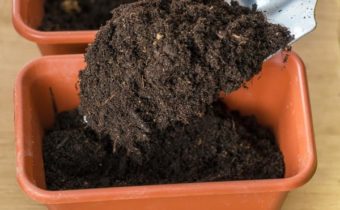 Fill the container or cups with planting soil almost to the top. In garden stores you can buy peat tablets: they are convenient for growing tomatoes on the windowsill, because they do not take up much space. Wet the ground thoroughly with an atomizer, and then place seeds on the ground with a 1-2 cm indent. Sprinkle the seeds with thin layers of soil or slightly squeeze a grain into the ground with your finger.
Fill the container or cups with planting soil almost to the top. In garden stores you can buy peat tablets: they are convenient for growing tomatoes on the windowsill, because they do not take up much space. Wet the ground thoroughly with an atomizer, and then place seeds on the ground with a 1-2 cm indent. Sprinkle the seeds with thin layers of soil or slightly squeeze a grain into the ground with your finger.
Immediately after planting, cover the container with cling film or a lid, but do not forget to leave a little space for access of fresh air, otherwise the seeds will suffocate. Put the container with seedlings on the window or nearby table. In the room where there is a container with seeds, the temperature should not be less than 22 degrees, preferably 24-26 degrees of heat.
In addition to the temperature of the seedlings need to properly care, namely:
- forget to ventilate the room after removing tomatoes from the window sill;
- after 2 weeks, begin to slowly remove the lid or film;
- light up the seedlings if you grow it at home in the winter;
- thin out seedlings if plants interfere with each other's development.
At the initial stage of the difficulties with the germination of seeds practically does not arise. If the grains were healthy, then in a few weeks the grains will turn into beautiful plants that need to be picked.
Do not place the seed box on a sunny window sill. Bright sunlight can destroy seedlings.
We carry out the first pick
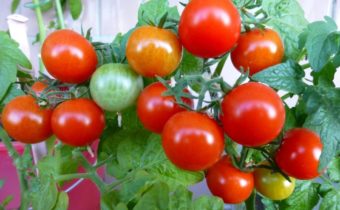 The first pick can be made when the second leaf is already formed on the stem of the plant. Be extremely careful, as the seedlings are still very fragile, especially the root system. Pry the ground can be tweezers or a needle to get the roots. For a picking, take a cup filled with earth, make a small hole in it for the roots and move the plant there. Dig the roots with primer, pour. Right after the picking, the bush may look a little wilted, no big deal - in just a couple of days it will gain strength and take root in a new place.
The first pick can be made when the second leaf is already formed on the stem of the plant. Be extremely careful, as the seedlings are still very fragile, especially the root system. Pry the ground can be tweezers or a needle to get the roots. For a picking, take a cup filled with earth, make a small hole in it for the roots and move the plant there. Dig the roots with primer, pour. Right after the picking, the bush may look a little wilted, no big deal - in just a couple of days it will gain strength and take root in a new place.
Transplant to a permanent place
When it takes 2-3 weeks from the moment of the first dive, you need to prepare a pot for the constant cultivation of tomatoes. The volume of the pot depends on the selected varieties of tomatoes. So for an ampel variety, the volume of the pot should be about 5-6 liters, for a dwarf variety, a small capacity of 2 liters will suffice. For the winter planting fit and plastic boxes, they are conveniently put on the windowsill.
A transplant to a permanent place is no different from a pick. The pot is filled with earth and transplanted into it is a grown-up plant, bury the roots and water the soil. Several bushes can be planted in one pot if the variety is dwarf, in other cases it is undesirable to plant more than 1-2 plants in a container.
Care for young plants
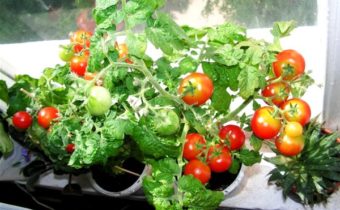 After transplanting, put the pots on the south side of the house. Tomatoes can be grown right on the windowsill in the winter, but do not forget to cover the window. It is advisable not to turn the pots, the plants do not like change. If possible, set above the seedlings of the lamp to light up the bushes in the evenings. Watering for young seedlings is important, but should not be too frequent. The optimal amount of watering per week -2-3 times, no more. Before watering, always check the soil for dryness, you can only water it when the ground has dried out 5 cm deep.
After transplanting, put the pots on the south side of the house. Tomatoes can be grown right on the windowsill in the winter, but do not forget to cover the window. It is advisable not to turn the pots, the plants do not like change. If possible, set above the seedlings of the lamp to light up the bushes in the evenings. Watering for young seedlings is important, but should not be too frequent. The optimal amount of watering per week -2-3 times, no more. Before watering, always check the soil for dryness, you can only water it when the ground has dried out 5 cm deep.
Top dressing in the cultivation of tomatoes is desirable, especially the plants accept mineral fertilizers. In a month the optimal amount of fertilizing is 3-4 times. The interval between them should be about a week, a little more. Fertilizers make a wet method, it is desirable to apply root dressings.
When the bushes become bigger, the stepchildren begin to form from the stem.Pysynki pinch, otherwise the ovaries will be small. On one bush enough to leave 4-6 brushes. Puff with hands, but do not forget to wear gloves - tomato juice is poisonous and can even provoke an allergic reaction.
During flowering, shake slightly the tomato bushes, the pollen will fall on the adjacent inflorescences, so the ovaries will be larger. If time allows, you can take a regular watercolor brush and collect pollen from flowers, and then transfer it to other inflorescences.
If you have a fan at home, plug it into the net and direct the air flow to the flowering seedlings. Pollination will happen much faster and better.
Tomato protection against diseases
Even when growing tomatoes on the windowsill in the winter, the possibility of infection with viruses and diseases is not excluded, so prevention is better to do, then the infection rice will disappear. The main enemy of tomatoes is phytophthora. To protect the bushes from late blight, you need not to abuse the watering, do not forget to drain the water from the pan. High humidity, stale air in the room creates favorable conditions for phytophtoras, so do not forget to open the window in the room where the seedlings are located.
For preventive measures, prepare a protective solution, and then spray it over the plants. The composition is as follows:
- 100-120 g of minced garlic;
- 5-6 crystals of potassium permanganate;
- 3 liters of clean water.
Dilute the solution in a jar, and then pour it into a spray bottle. Irrigate them seedlings 1 time in 7 days before flowering. 2-3 treatments are enough. The solution is safe for the bushes themselves, and for the fruits.
Care of adult plants
Quality of a crop depends on care of plants. Room tomatoes will ripen in larger quantities if tomatoes are grown properly: water, feed, and seed rice. Caring for room tomatoes is not complicated, but requires little training and knowledge.
Illumination
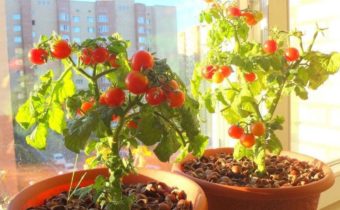 Sun for vegetables is necessary. If you are going grow tomatoes in the apartment in spring or summer, you can make pots directly on the balcony, loggia. Place the culture pot on the south or east window. You can not put the plants on the north side, the seedlings will grow slowly. Too bright sunshine has a bad effect on tomato leaves. If you saw brown spots on the foliage, the plant was sunburned, immediately move the pot to a safe place.
Sun for vegetables is necessary. If you are going grow tomatoes in the apartment in spring or summer, you can make pots directly on the balcony, loggia. Place the culture pot on the south or east window. You can not put the plants on the north side, the seedlings will grow slowly. Too bright sunshine has a bad effect on tomato leaves. If you saw brown spots on the foliage, the plant was sunburned, immediately move the pot to a safe place.
The optimal day length for tomatoes should be from 14 to 16 hours.
Temperature
For adult tomatoes, it is desirable to maintain the temperature at 20-25 degrees Celsius. Higher temperature should not be raised, the heat of the tomatoes can not move. Turn off the heating radiators at home, they dry the air too much. Try to open the windows in the room, but before removing the plants from the draft. At night, tomatoes can be put on the floor, where the temperature is lower than at the top.
Humidity
When winter growing plants need to be sprayed, because they lack moisture. Use a conventional spray bottle: spray clean cool water on the leaves at least a couple of times a week. If there is a humidifier at home, put it next to the pot where you are growing the crop. However, do not overdo it with over-wetting. Cold air and high humidity can attract blackleg and other fungal diseases.
Watering
The optimum rate for watering adult bushes is considered 1-2 times a week. It is necessary to water only distilled cool water of low hardness. It is advisable to filter the water in order to remove harmful chlorine compounds from the water. Water the plants need at the root. Do not allow the soil to dry out, because of the lack of moisture in the soil, the bushes begin to drop the leaves, and even the tomatoes themselves.
Top dressing
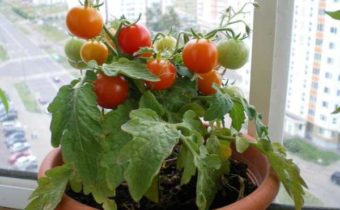 When grown in an apartment in the winter, tomatoes on the window can be fed with nutrients for greater yield.To develop the root system, use the root stimulator “Kornevin”. Dilute the preparation according to the instructions and water the young plants 2-3 weeks after transplanting to the pot in a permanent place. The second feeding can be done after another 2-3 weeks. Before flowering, so that the stem is saturated with useful trace elements and gain green mass, take nitrogen fertilizer. Nitroammofosk has an excellent effect. You need to prepare fertilizer in the following proportions:
When grown in an apartment in the winter, tomatoes on the window can be fed with nutrients for greater yield.To develop the root system, use the root stimulator “Kornevin”. Dilute the preparation according to the instructions and water the young plants 2-3 weeks after transplanting to the pot in a permanent place. The second feeding can be done after another 2-3 weeks. Before flowering, so that the stem is saturated with useful trace elements and gain green mass, take nitrogen fertilizer. Nitroammofosk has an excellent effect. You need to prepare fertilizer in the following proportions:
- 2 g of nitroammofoski;
- liter of clean water.
Diluted fertilizer pour seedlings under the root. after a week feeding again. Nitrogen fertilizers do not need to feed more tomatoes. During flowering and fruiting vegetables need potassium. Take potassium sulphate powder and dilute it at the rate of 1 g per liter of water. Potassium supplement can be made root and foliar way.
The number of all dressings should not exceed 4 times.
Masking and tying
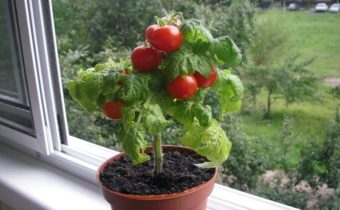 Seed growers claim that pasynkovanie is not required for indoor tomatoes: the plants grow miniature, not prone to branching and the formation of new shoots. It is not always so. Most often, pinch and pinch the shoots still need, otherwise the yield will deteriorate along with the quality of the fruit. You can safely remove the lowest leaflets: they grow underexposed, there is no benefit from them. Pinch the top of the stem when it is longer than you need. Stalk do not forget to tie up to the support, so that it does not break.
Seed growers claim that pasynkovanie is not required for indoor tomatoes: the plants grow miniature, not prone to branching and the formation of new shoots. It is not always so. Most often, pinch and pinch the shoots still need, otherwise the yield will deteriorate along with the quality of the fruit. You can safely remove the lowest leaflets: they grow underexposed, there is no benefit from them. Pinch the top of the stem when it is longer than you need. Stalk do not forget to tie up to the support, so that it does not break.
When the shoots are planted, cut off the branches, old leaves. We need to look to the bush did not thicken much. Pruning is best done early in the morning, then it will be less stressful for the plant. Slices can be treated with a weak solution of potassium permanganate to prevent infection.
Diseases and pests
Inexperienced gardeners are interested in whether it is possible not to process vegetables from diseases and pests, since they grow at home? Of course not. At home there are other indoor plants that can be carriers of infections. In addition to plant disease can develop from an overabundance of moisture in the soil, its acidification. Processing takes little time, but the harvest will definitely be healthy.
Take the drug Fitosporin for the prevention of viral and fungal diseases. It has a wide range of effects on viruses, does not harm the plant. Dilute "Fitosporin" should be in accordance with the instructions in the instructions, and then irrigate the seedlings. In addition to “Fitosporin”, ordinary potassium permanganate is suitable for processing: take 2-3 crystals of a substance per liter of water and dissolve them. The resulting solution irrigate tomato foliage 1 time in 2 weeks.
If the soil suddenly began to acidify, then the appearance of a tomato pest, the whitefly, is possible. Dolomite flour or crushed chalk should be added to the ground. Substances neutralize excess acid and make the soil neutral. The whitefly itself can be eradicated by any insecticide. The insect will quickly disappear and no longer occur.
Always re-treat insects and diseases after 7-10 days.
Common Problems
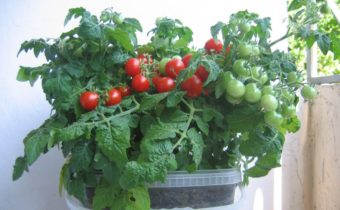 When you do everything right, the seedlings develop quite quickly: the leaves gain green color, look juicy, the ovaries are formed actively. However, it often happens that the seedlings themselves signal problems. Suddenly spots appear on the foliage, blotches, leaves wither, flowers may fall down. To eliminate the cause, you need to find out its origin. Here are the most common mistakes that gardeners themselves make:
When you do everything right, the seedlings develop quite quickly: the leaves gain green color, look juicy, the ovaries are formed actively. However, it often happens that the seedlings themselves signal problems. Suddenly spots appear on the foliage, blotches, leaves wither, flowers may fall down. To eliminate the cause, you need to find out its origin. Here are the most common mistakes that gardeners themselves make:
- improper feeding or lack thereof. Lack of nitrogen affects the foliage, it immediately turns yellow, and then completely subsides. In this case, you need to feed the tomatoes with any nitrogen fertilizer. If deep wrinkles appeared on the leaves, then the seedlings were obviously overfed with calcium. In this case, you just need to stop all feeding, and then use potash salts;
- improper watering.Seedlings are often watered, as a result of which the root system began to rot. If it has not yet completely rotted, there is a chance to save the plants: stop watering, allow the ground to dry out well;
- infection of seedlings with viruses and pests. The grower did not cultivate seeds and soil before planting, but hidden viruses or insect larvae remained in it. Take a closer look at the ground. If on it or on the leaves are larvae, there are insects, then immediately take action. If you do not want to use fungicidal and insecticidal preparations, use folk remedies. Most insects repel the broth of onion peel, just spray the infusion on the leaves.
Do not leave plants unattended, check the condition of the seedlings every day. If you notice any deviation and take action immediately, then the future harvest will not affect it.
Varieties of tomatoes for indoor growing
Buy special varieties for home growing tomatoes. Bushes grow compact. they will not take much space in your apartment, and it will be very convenient to look after them. For cultivation of tomatoes on a window sill in the winter the best grades are:
- Balcony miracle. The height of an adult bush does not exceed 60 cm; fruits are formed quickly: 90 days after planting the seeds. The taste of tomatoes is sweet, the mass of one tomato does not exceed 60 g. The yield is 2 kg of fruits from a bush;
- Dubko. The height of the bush does not exceed 60 cm. The tomatoes are large, weighing up to 100 g. It needs artificial pollination, but is resistant to viruses and fungal diseases;
- Ruby Red Very beautiful variety with compact bushes. Tomatoes are small. weighing 50 grams each. The color of the peel is dark red with a glossy sheen. The taste is sweet;
- White filling. Plant height is 70 cm. The term of fruit ripening is 85 days. Large tomatoes weighing up to 130 g. The skin is dense, protects the flesh from damage;
- Bonsai Lush bushes have a miniature size - up to 30 cm. The fruits are small. weight does not exceed 30 g. The yield per plant is 1 kg of fruit;
- Micron NK. The smallest variety of indoor tomatoes. The height of the bushes does not exceed 20 cm, and the fruit weight is 15 g. Perfect for winter growing, because the variety does not need much sun;
- Pygmy. Tomato ripening period is short. rarely exceeds 85 days. The fruits grow red in color with a sweet taste. Tomato weight - 20-25 g.
From the variety of indoor varieties, choose the one that best suits your conditions. Growing tomatoes at home is very convenient and does not require special skills. During ripening, you can pick fresh tomatoes for salad and crumble them into a cup. If you grow tomatoes in the winter, you will save part of the budget, because in the winter time vegetables are very expensive in the store, and the quality of the purchased tomatoes is much worse than that of the home ones.

